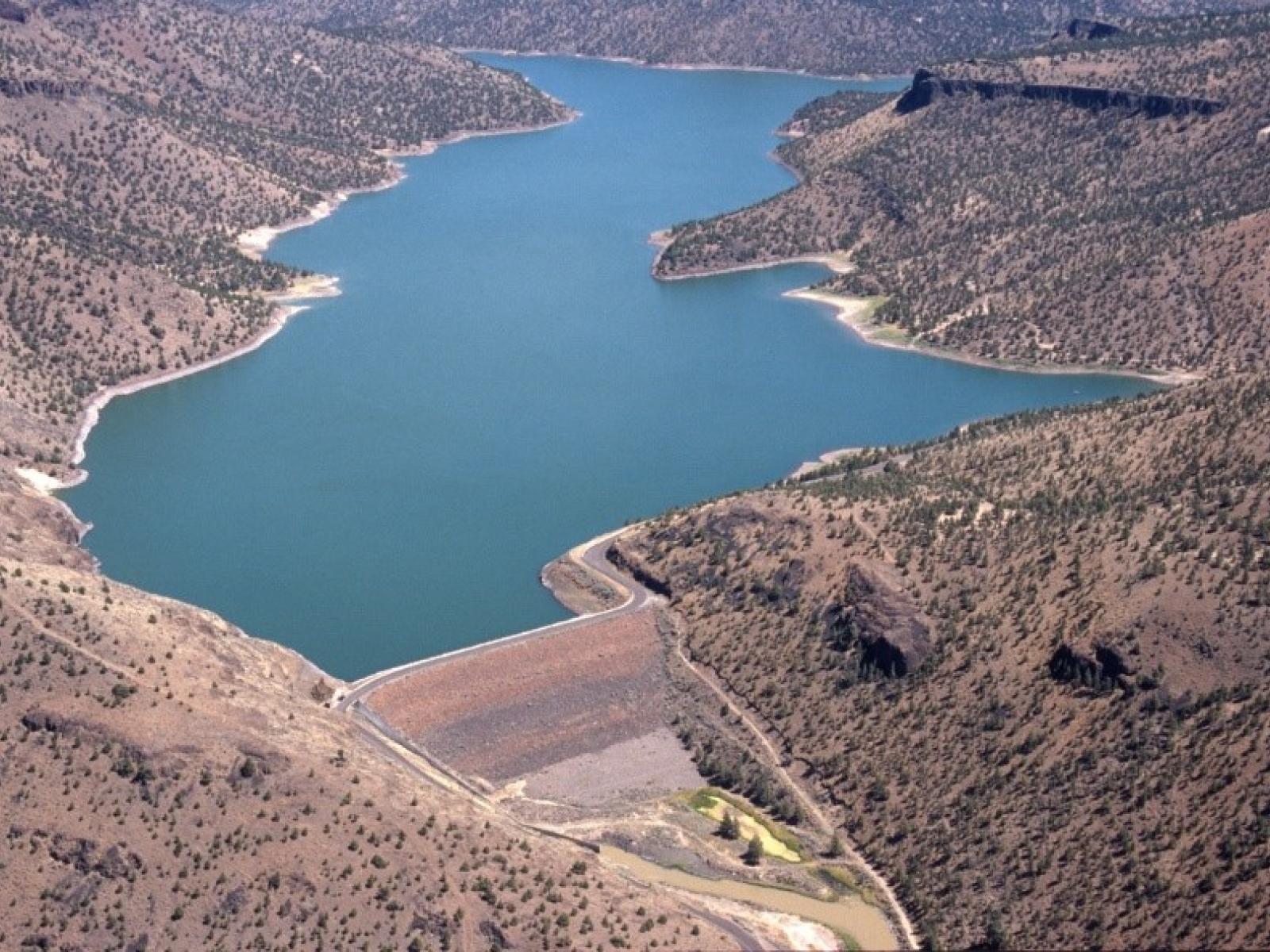The Many Shapes of Reservoirs
Researchers developed a new global data set for better representing reservoirs in Earth system models

A key challenge in modeling the influence of reservoirs on streamflows and other water cycle processes is accounting for the relationship between reservoir depth, surface area, and storage. By deriving optimal geometric shapes for more than 6,800 reservoirs worldwide, researchers developed a data set that provides more accurate storage-area-depth relationships.
The Science
Reservoirs store and release water for flood control, navigation, and water supplies for the domestic, industrial, agricultural, and energy sectors. A key challenge in modeling the influence of reservoirs on streamflows and other water cycle processes is accounting for the relationship between reservoir depth, surface area, and storage. To address this challenge, a team including scientists at the U.S. Department of Energy’s Pacific Northwest National Laboratory developed a new global reservoir storage-area-depth data set by deriving an optimal geometric shape for more than 6,800 reservoirs worldwide. This new data set is critical for accurately representing reservoir processes in Earth system models, including the influence of reservoirs on regional hydrology, ecology, and biogeochemistry.
The Impact
Approaches used in previous studies to model reservoir storage-area-depth relationships are either difficult to generalize beyond a specific site or too simplified to account for fluctuations in reservoir surface area and storage over time. The new global reservoir storage-area-depth data set developed in this study will improve the ability to simulate reservoir dynamics in Earth system models. These details are critical for understanding how water management interacts with energy production and other sectors.
Summary
This study focused on the development of representative storage-area-depth relationships for more than 6,800 reservoirs around the world. The research team identified a small number of representative reservoir geometries defined by a combination of horizontal surface shapes (parabolic, rectangular, elliptical) and vertical cross-section shapes (wedge, bowl, prism). For each reservoir, researchers used an optimization algorithm to select the geometric shape that best represented the effective reservoir length and width values derived from the Global Reservoir and Dam (GRanD) database. The team then calculated reservoir storage-area-depth relationships based on the optimal geometry. Using this method, about 70 percent of reservoirs included in GRanD had errors in total storage of less than 5 percent, and about 85 percent had errors less than 25 percent. Researchers validated the storage-depth relationship using both remote-sensing data for 40 major reservoirs globally and ground-based measurements for 34 reservoirs in the United States and China.
The more accurate storage-area-depth relationships in this new data set will improve the representation of reservoir dynamics in global hydrological and Earth system models. For example, the relationships can be used to calculate physical reservoir characteristics needed for modeling heat transfer, mass balance, or nutrient concentration. The team is using the global data set to model reservoir stratification, or the separation of water into layers of varying temperatures. Accurate representation of stratification is vital for improving the simulation of stream temperature—an important consideration for thermoelectric power plant performance and aquatic habitats.
PI Contacts
Ian Kraucunas, Pacific Northwest National Laboratory, ian.kraucunas@pnnl.gov
Jennie Rice, Pacific Northwest National Laboratory, jennie.rice@pnnl.gov
Funding
The U.S. Department of Energy Office of Science, Biological and Environmental Research supported this research as part of the Multisector Dynamics, Earth and Environmental System Modeling Program.
Revised: October 22, 2019 | Published: March 11, 2019
Yigzaw W, H-Y Li, Y Demissie, MI Hejazi, LR Leung, N Voisin, and R Payn. 2018. “A New Global Storage-Area-Depth Data Set for Modeling Reservoirs in Land Surface and Earth System Models.” Water Resources Research 54(12):10,372−10,386, https://doi.org/10.1029/2017WR022040.